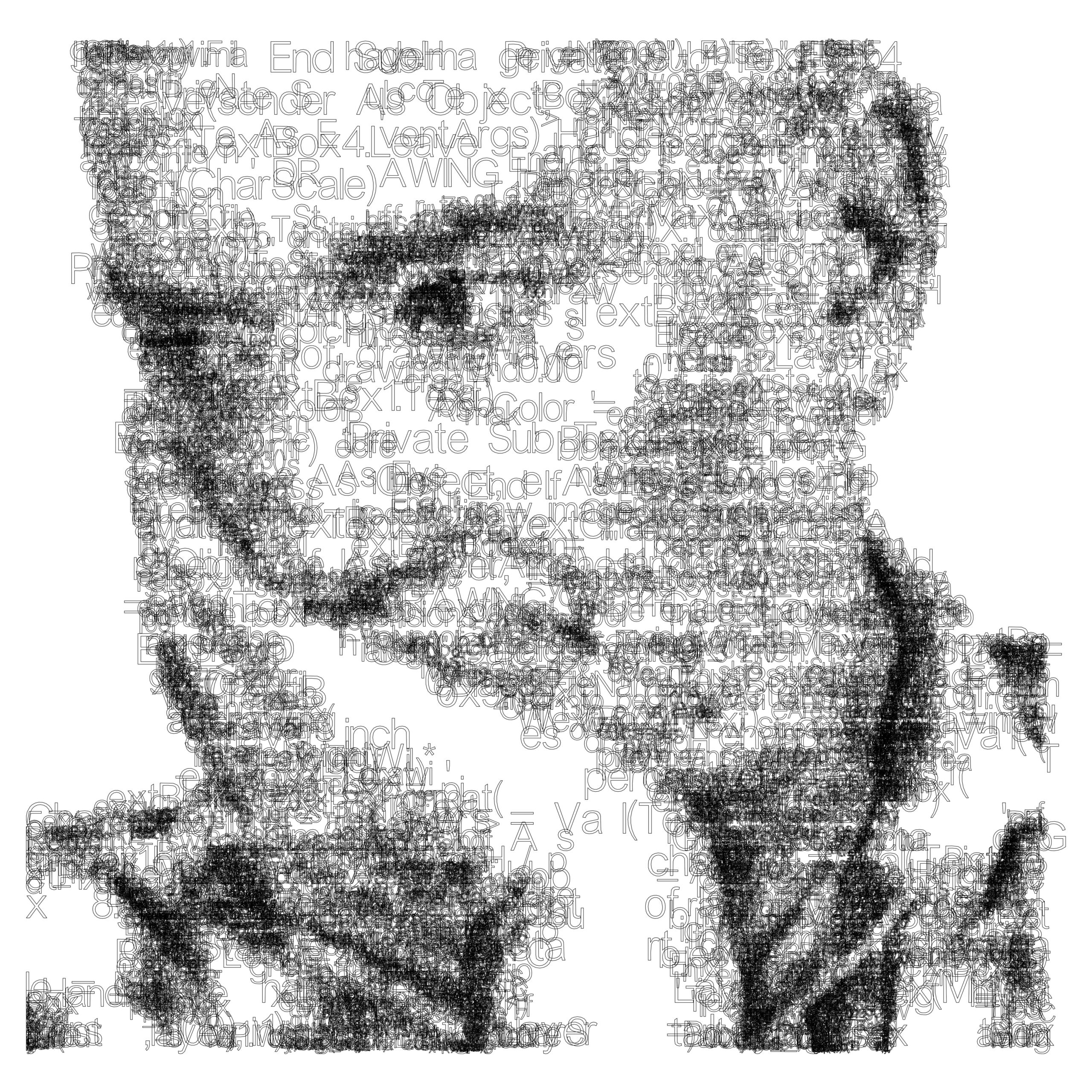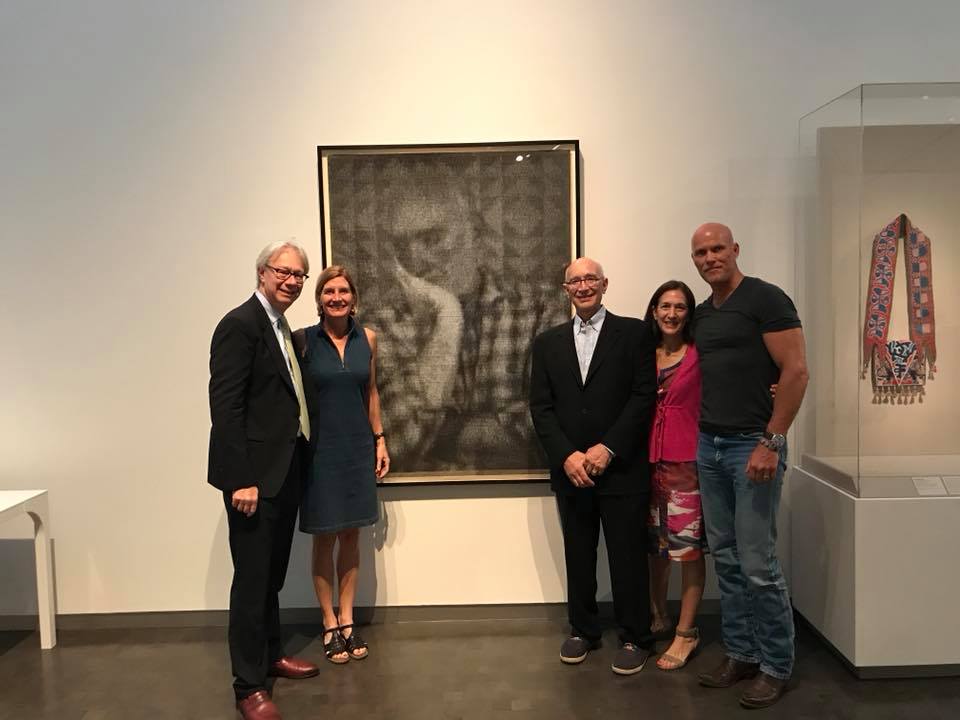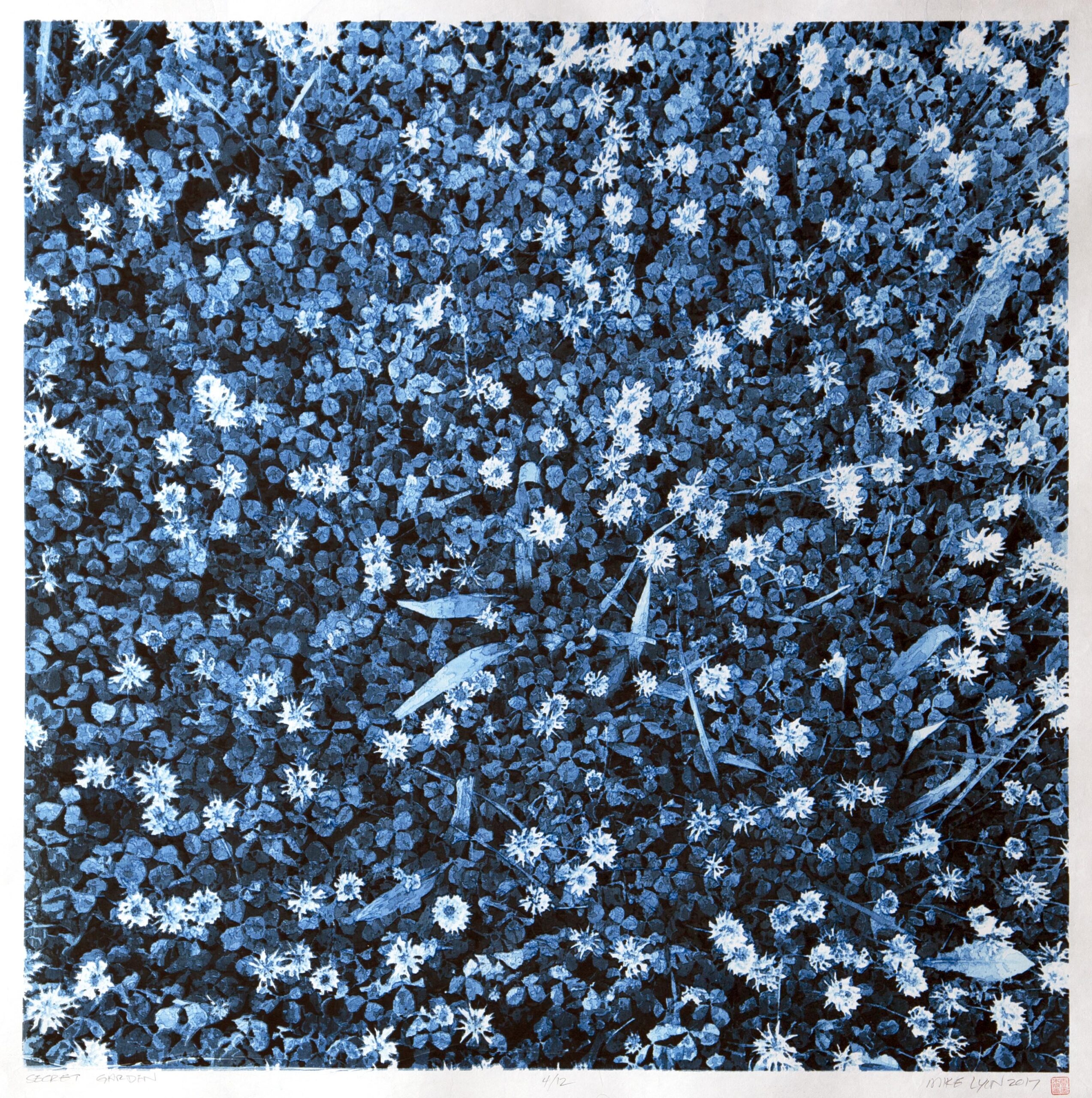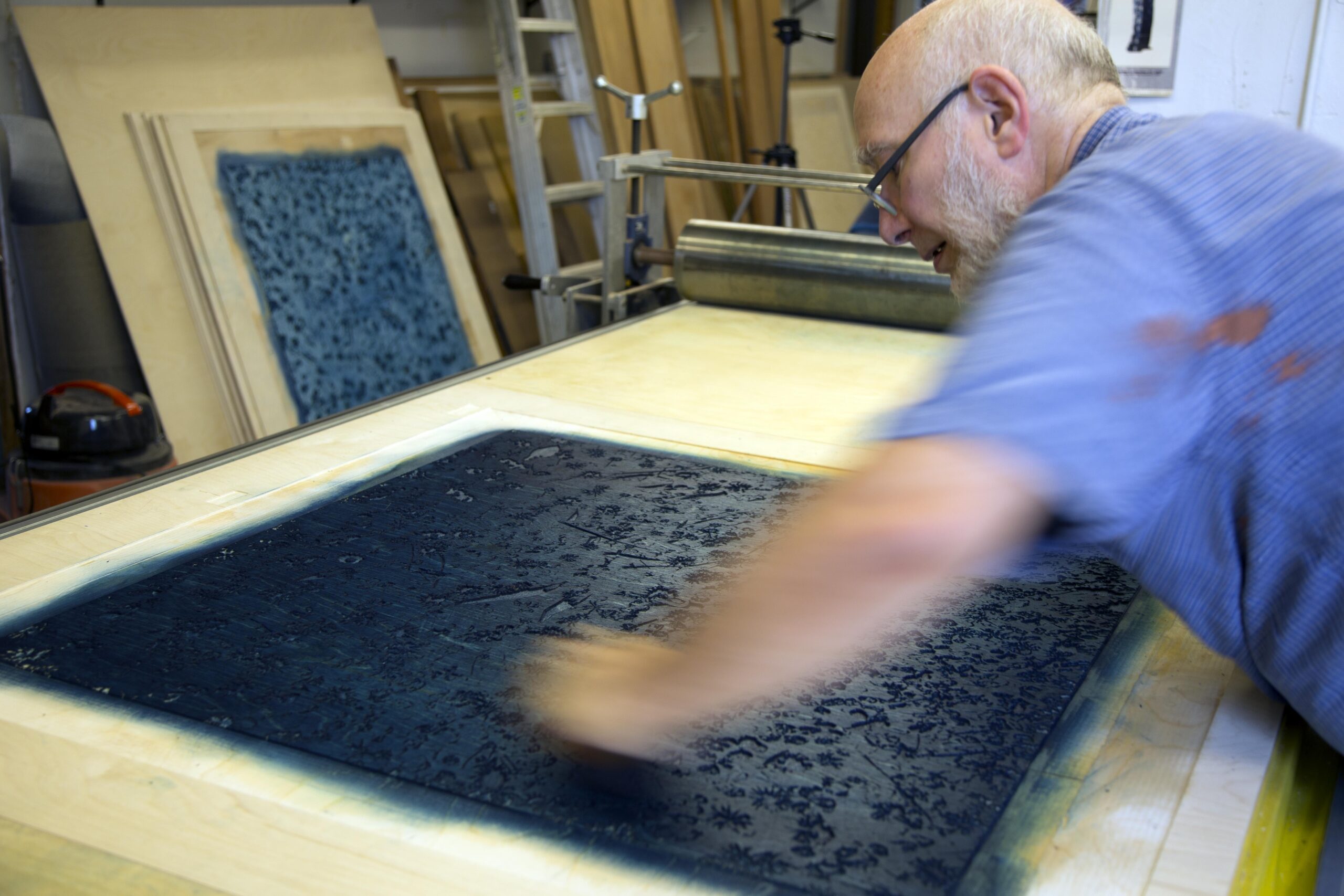the February 5, 2022 issue of The Independent https://kcindependent.com/art-scene-mike-lyon/
By Anne Potter Russ
Art Scene – Mike Lyon
Some things can’t be explained.
Some things can be briefed and overviewed in an attempt to condense the extremely complicated into the understandable for those of us who need assistance. The work of Mike Lyon straddles the hemispheres of north and south, east and west, left brain and right brain, genius and super-genius, explainable and obscure. The work of Mike Lyon can invite, frustrate, delight, mesmerize, complicate, modulate, and spin a web around its consumer. Consider it fair to say that there is no other artist, engineer, musician, critic, and programmer, all in one human form anywhere else in the universe. Mike Lyon is a masterpiece.
With a bachelor’s degree in architecture and fine art (sculpture) from the University of Pennsylvania, and a bachelor of fine arts degree in painting from the Kansas City Art Institute, Mike’s pedigree is unarguable. The son of Joanne and Lee Lyon is the product of an amateur photographer/businessman and a painter (also from KCAI and a student of Wilbur Niewald). Art was in Mike’s blood from the beginning. Possibly not even he knew how many forms his creativity would take.
A keen interest in all things Japanese has resulted in Mike’s mastery of the Japanese artform of woodcutting and printing, as well as his black belt in Shotokan Karate and in that discipline he holds the second highest rank in America as a “yodan” or fourth black belt.
Mike and his wife, Linda, also play Baroque violin duets together. They auditioned for the Kansas City Civic Orchestra in 2001, and have shared a place in the second violin section ever since.
Guitar front and back

Did we forget to mention that Mike makes first-class, hand-hewn, amazingly beautiful and playable guitars and ukuleles? “Mike is a total artist and human being. His instruments are a meditation on sound and material that lead him in directions that often blur the lines between known guitar classification,” according to local musician Beau Bledsoe. (Materials used for this photo: Bubinga body with curly Port Orford cedar top with falcate bracing. Neck is Spanish cedar and mahogany. Curly maple binding, fancy basket-weave rosette, Macassar ebony fretboard and bridge, mother of pearl fret markers, bone nut and saddle, Rubner fancy black and engraved tuning machines.)
It’s all art, every form and movement is art, but we haven’t even begun to describe what Mike’s visual art creations are, or where they came from, or how – oh, never mind – we’ll never be able to completely describe the “how.” This is where more of the briefing and overviewing come in. Shall we start with a printed self-portrait produced by code Mike wrote on the computer and delivered on paper with the actual code creating the visual likeness?
2014 Self Portrait


Better defined by the artist himself, “In my 2014 Self Portrait, it’s the code that moves the pen that makes the image – I wrote the code – the image is mine, it was a pretty interesting piece that The Nelson-Atkins Museum of Art collected, thanks to the generous gift by Sandy and Christine Kemper. We are pictured in front of my drawing (coincidentally, a beaded bag donated to the museum by my father is displayed next to us!).”
The 1990s found Mike, in earnest, exploring his media – starting with lithographs and monotypes, and something Mike calls tiles. “Early experiments were compositions of square ‘tiles’, colored and arranged in grids so that some image (often a portrait) was communicated. Initially, I composed and displayed these on the monitor of my computer, as very large pixels which I then painted from life as if the image on the monitor was a still life. I became interested in finding a threshold of fewest colors and pixels or tiles which still communicated a meaningful image. In order to speed the image-making process, I machined several thousand half-inch cubes so that each face of each cube had a different fraction of its surface removed. I would arrange these in grids, ink them, and pull a relief print. Then I’d clean the blocks, rearrange them, ink them again, and overprint.”
All of this leads us to moku-hanga – Japanese for woodblock prints. Mike’s work began in earnest with the method of reduction woodblock printing. This involves the repeated cutting of a single woodblock, each cutting taking away more of the printable surface. The remaining uncarved areas are repeatedly inked and printed. After each carving step, ink is applied and a print is made on paper, and it continues this until possibly 25 or 30 cuts and prints have been made. One mistake, and the entire process must be started anew.


Since the days of his hand-carving, Mike has enlisted the assistance of a CNC machine (computer numerically controlled), which speeds up the process and allows the artist to produce much larger pieces without the physical wear and tear on the human body. Secret Garden is an example of the kind of prints produced more recently. Of this piece, Mike said, “Secret Garden is a view of the clovers that bloom near my home. The block designs are complex and, even though I used a CNC machine to carve, on average it took 20 hours to complete each of the dozen blocks, almost three weeks to carve them all. Once all the blocks were carved, I began to print. Because the paper is kept damp throughout the process, it will spoil after four or five days, so it’s kind of a race to complete an edition before the paper begins to weaken. Secret Garden took me three very long and exhausting days to print. I love this kind of design – where the eye wants to move continuously and can find no ‘center of attention’. There’s something like a visual chant happening here, and, especially with the deep indigo coloration, it all feels pretty mysterious and energized. It feels like I’m in a clear sea, floating over coral or maybe some huge anemone. Satisfying and a little bit of awesome.”
Maybe “a little bit of awesome” helps us understand the journey with Mike Lyon. He is, as he does in person, understating his mark on the artistic world, the Kansas City community, and individual psyches. Truly a gentleman, an artist, an engineer, and an inexplicably charming and disarming man, Mike is a paragon of creative endeavor.
